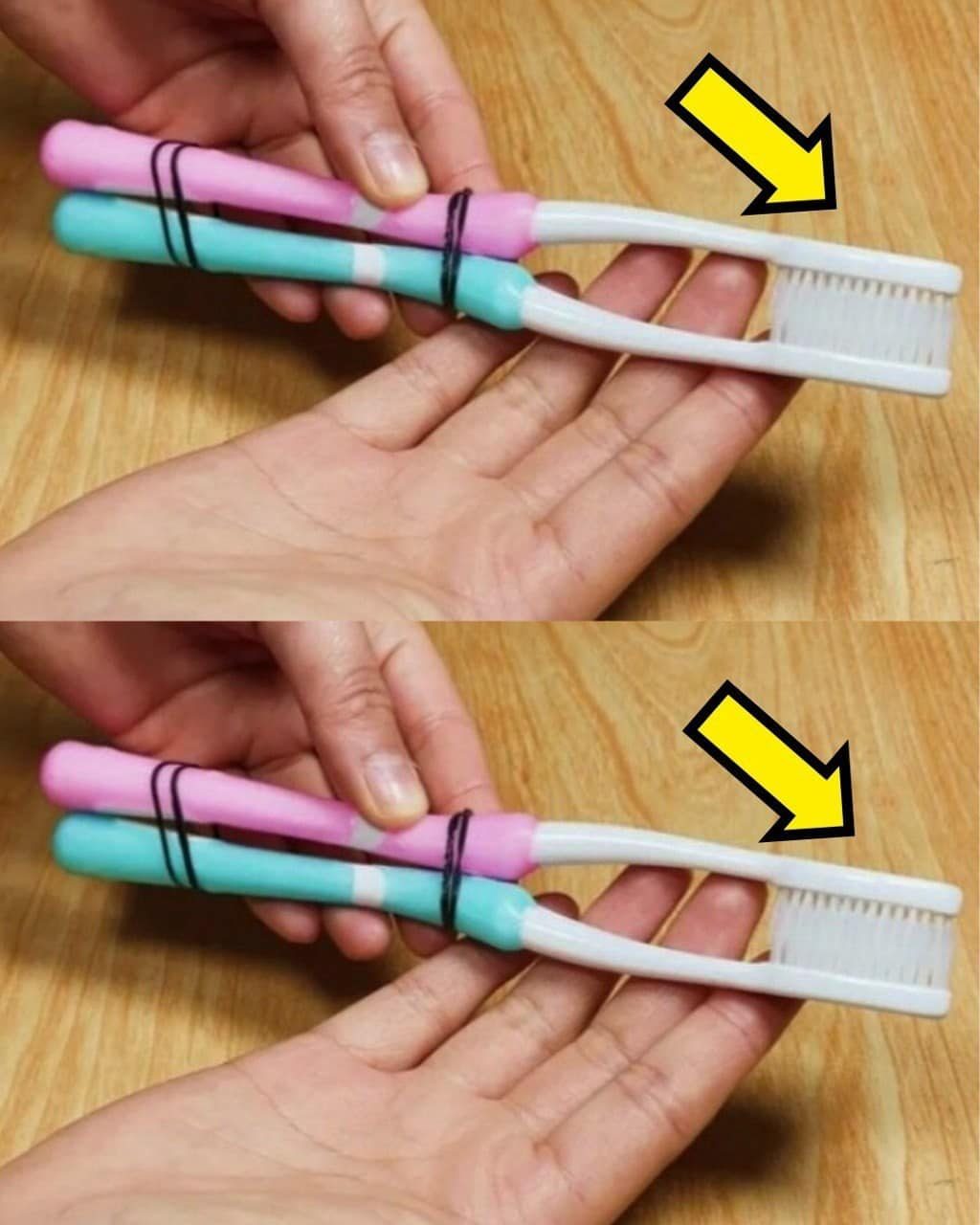ADVERTISEMENT
Don’t Throw Away Old Toothbrushes: Tying Two Together Can Solve Many Problems
We all know the drill: after a few months of use, it’s time to replace your toothbrush. But what if I told you that instead of tossing your old toothbrush, you could give it a second life by turning it into a handy tool for all sorts of household tasks? It’s true! One simple trick—tying two old toothbrushes together—can solve many everyday problems and help you tackle various projects around the house.
So before you throw that worn-out toothbrush into the trash, let me show you how this simple DIY hack can make your life easier, cleaner, and more efficient. Here’s everything you need to know!
Why Tying Two Toothbrushes Together Works
At first glance, you might think tying two toothbrushes together sounds a little odd. But when you consider the practicality of the tool you’re creating, it quickly becomes clear why it’s such a game-changer. By joining two toothbrushes, you double the bristle surface area, making it easier to tackle larger cleaning tasks. Plus, the handle can be customized to be longer, allowing you to reach difficult spots without straining.
This DIY tool can be used for cleaning, crafting, gardening, and more. Let’s dive into the numerous ways tying old toothbrushes together can help solve problems in and around your home.
How to Tie Two Toothbrushes Together
Before you start using your old toothbrushes for new purposes, here’s a quick guide on how to tie them together securely:
What You’ll Need:
- Two old toothbrushes (make sure they’re not too worn out—bristles should still be firm)
- A sturdy piece of string, cord, or rubber bands
- Scissors (if needed to cut the string or cord)
Instructions:
- Align the toothbrushes: Lay the toothbrushes side by side with the bristles facing outward. You can adjust the handles to ensure they’re aligned and create a comfortable grip.
- Tie them together: Use the string, cord, or rubber bands to securely fasten the handles of the two toothbrushes together. You can tie them at the top where the handle meets the brush or wrap them near the bottom, de
